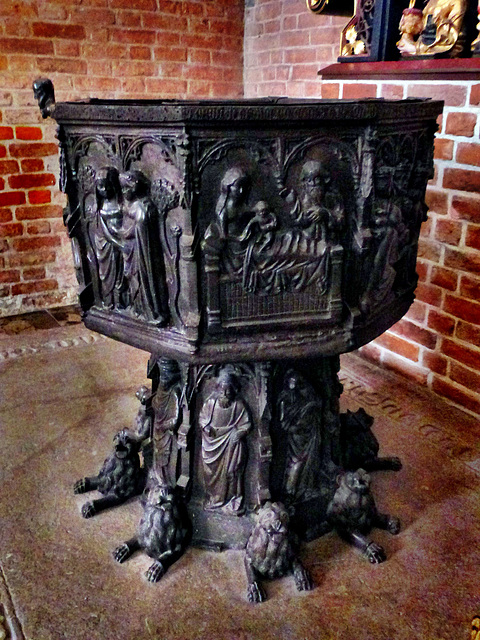Elbląg - Katedra św. Mikołaja
Elbląg - Katedra św. Mikołaja
Elbląg - Katedra św. Mikołaja
Elbląg - Katedra św. Mikołaja
Morąg - Ratusz
Morąg - Johann Gottfried Herder
Morąg - Kościół św. św. Piotra i Pawła
Morąg - Kościół św. św. Piotra i Pawła
Morąg - Kościół św. św. Piotra i Pawła
Morąg - Kościół św. św. Piotra i Pawła
Olsztyn - Stary Ratusz
Olsztyn - Rynek
Olsztyn - Szlak Św. Jakuba
Olsztyn - Brama Górna
Olsztyn - Bazylika konkatedralna św. Jakuba
Olsztyn - Bazylika konkatedralna św. Jakuba
Olsztyn - Bazylika konkatedralna św. Jakuba
Olsztyn - Bazylika konkatedralna św. Jakuba
Olsztyn - Nicolaus Copernicus
Olsztyn - Zamek Kapituły Warmińskiej
Olsztyn - Zamek Kapituły Warmińskiej
Olsztyn - Zamek Kapituły Warmińskiej
Olsztyn - Zamek Kapituły Warmińskiej
Elbląg - Katedra św. Mikołaja
Elbląg - Katedra św. Mikołaja
Elbląg
Elbląg
Zamek w Malborku - Marienburg
Zamek w Malborku - Marienburg
Zamek w Malborku - Marienburg
Zamek w Malborku - Marienburg
Zamek w Malborku - Marienburg
Zamek w Malborku - Marienburg
Mokry Dwor - Nassenhuben
Gdańsk
Gdańsk - Kościół św. Jana
Gdańsk - Kościół św. Jana
Gdańsk - Kościół św. Jana
Gdańsk - Kościół św. Jana
Gdańsk - Kościół św. Jana
Gdańsk - Kościół św. Jana
Gdańsk - Kościół św. Bartłomieja
Gdansk - Winne Grono
Gdańsk - Kościół św. Katarzyny
Gdańsk - Kościół św. Katarzyny
Location
Lat, Lng:
You can copy the above to your favourite mapping app.
Address: unknown
You can copy the above to your favourite mapping app.
Address: unknown
Keywords
Authorizations, license
-
Visible by: Everyone -
All rights reserved
-
115 visits
Elbląg - Katedra św. Mikołaja


Elbląg´s history dates back to 1237 when the Teutonic Order constructed a fortified stronghold here. The castle subsequently served as the official seat of the Teutonic Order Masters. The city itself was founded under the protection of the Teutonic Order by craftsmen and merchants coming from Lübeck. In 1246, Elblag was granted city rights according to Luebian law.
Elbląg became part of the Hanseatic League, which contributed much to the city's wealth. At the beginning of the 14th century, the city had grown so much that in 1337 the Commander Siegfried von Sitten laid out the Elblag New Town outside the gates.
In 1397 the "Eidechsenbund" ("Lizard League") was formed and the rebellion of the nobility and towns against the rule of the Order began. After the Battle of Grunwald (Battle of Tannenberg) Polish troops besieged the Elbing Castle of the Order in 1414, but without success.
In 1478 the previously independent halves of the town, the Old and New Towns of Elbing, merged.
Elbląg joined Poland in 1454 and after the defeat of the Teutonic Knights in the Thirteen Years’ War was recognized as part of Poland.
The Katedra św. Mikołaja (St. Nikolauskirche) was originally a parish church. It is the cathedral of the Elbląg diocese since 1992.
The origins date back to the mid-13th century. Over the course of two centuries, the church was gradually enlarged.
From 1573 to 1617 the church served as the main church of the Lutheran congregation, but then it was given back to the Catholics
On April 26, 1777 lightning struck the tower, which burst into flames, followed by the entire church. Shortly after the fire, the vaults collapsed. In a difficult financial situation, the city could not rebuild the church in its original appearance. All towers were demolished and the church was finished more than 6.5 meters lower with baroque dome vaults. The triple gable roof was replaced by a single gable roof. In 1790 the main altar was reconstructed.
The Gothic bronze baptismal font was cast in 1387 by Master Bernhauser.
Elbląg became part of the Hanseatic League, which contributed much to the city's wealth. At the beginning of the 14th century, the city had grown so much that in 1337 the Commander Siegfried von Sitten laid out the Elblag New Town outside the gates.
In 1397 the "Eidechsenbund" ("Lizard League") was formed and the rebellion of the nobility and towns against the rule of the Order began. After the Battle of Grunwald (Battle of Tannenberg) Polish troops besieged the Elbing Castle of the Order in 1414, but without success.
In 1478 the previously independent halves of the town, the Old and New Towns of Elbing, merged.
Elbląg joined Poland in 1454 and after the defeat of the Teutonic Knights in the Thirteen Years’ War was recognized as part of Poland.
The Katedra św. Mikołaja (St. Nikolauskirche) was originally a parish church. It is the cathedral of the Elbląg diocese since 1992.
The origins date back to the mid-13th century. Over the course of two centuries, the church was gradually enlarged.
From 1573 to 1617 the church served as the main church of the Lutheran congregation, but then it was given back to the Catholics
On April 26, 1777 lightning struck the tower, which burst into flames, followed by the entire church. Shortly after the fire, the vaults collapsed. In a difficult financial situation, the city could not rebuild the church in its original appearance. All towers were demolished and the church was finished more than 6.5 meters lower with baroque dome vaults. The triple gable roof was replaced by a single gable roof. In 1790 the main altar was reconstructed.
The Gothic bronze baptismal font was cast in 1387 by Master Bernhauser.
- Keyboard shortcuts:
Jump to top
RSS feed- Latest comments - Subscribe to the comment feeds of this photo
- ipernity © 2007-2025
- Help & Contact
|
Club news
|
About ipernity
|
History |
ipernity Club & Prices |
Guide of good conduct
Donate | Group guidelines | Privacy policy | Terms of use | Statutes | In memoria -
Facebook
Twitter

Sign-in to write a comment.